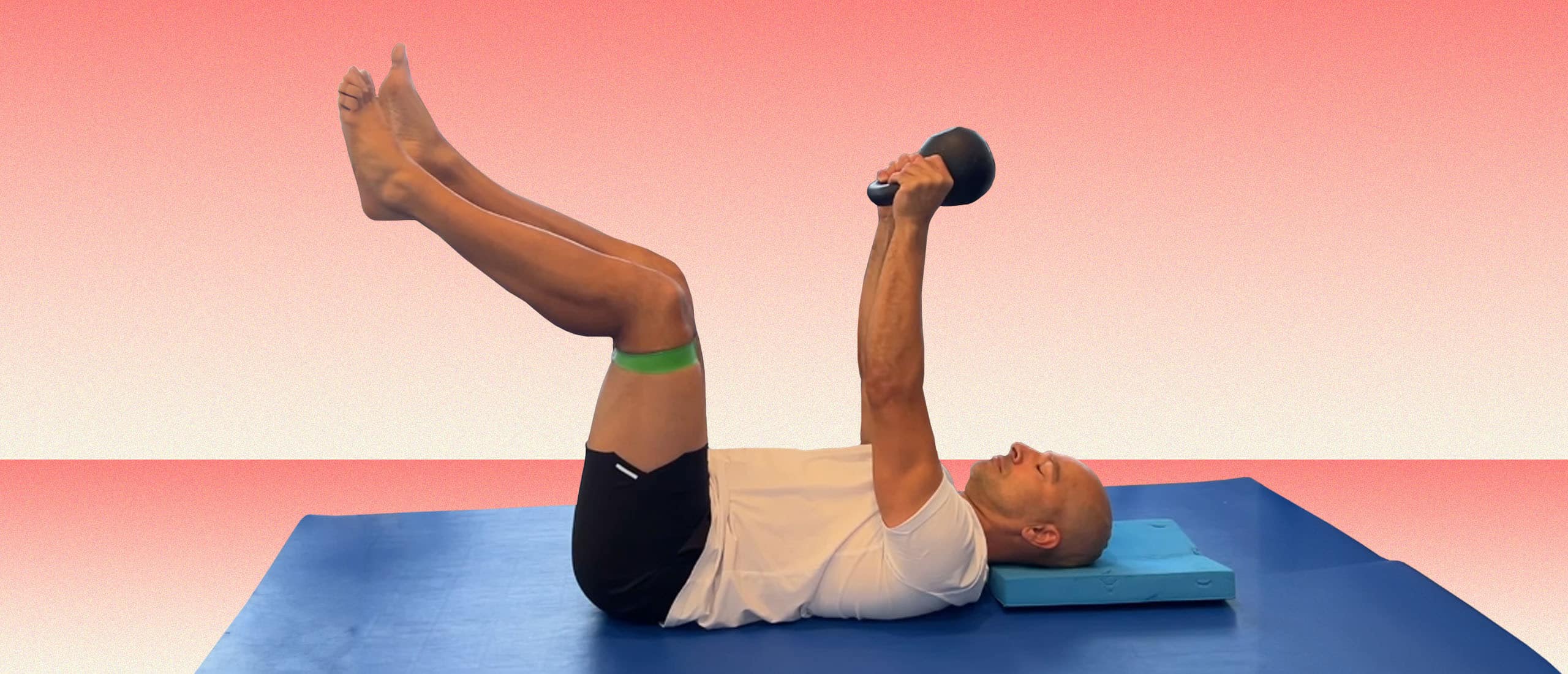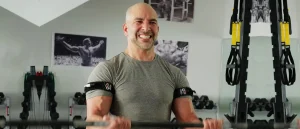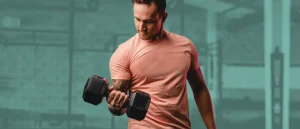Forget Crunches. Here’s How Longevity Expert Peter Attia Works His Core
When you think about ab exercises, what comes to mind? Sit-ups, Russian twists, maybe mountain climbers if you’re feeling fancy? While these exercises have a time and place—mainly whooping your ass during a merciless MetCon workout—but take it from longevity physician Peter Attia, M.D.: they aren’t doing the most for your core.
In a recent Instagram post, Attia shared (with the help of chiropractor Kyler Brown, D.C.) one of his favorite core workouts, which falls into a category called anti-extension core movements. A move he claims is essential for countering what he calls “hyperextension” or “chest out + duck butt.”
Technically classified by PTs as lower cross syndrome, this bad posture habit is the hallmark of a sedentary lifestyle. Lower cross syndrome can be spotted as an excessive arch in the lower back when you’re relaxed and typically comes along with tight (and sometimes painful) lower back and hip flexors, and weak glutes and abs.
Think you might have lower cross syndrome? (Hint: You probably do). Here’s everything you need to know about anti-extension core exercises so you can fix your posture and nix pain, stat.
What Is Anti-Extension Core Exercise and Why Is It Important?
Anti-extension core training is the key to building core stability. It’s a specific group of core exercises designed to activate your transverse abdominis, rectus abdominis, and supporting core muscles in order to resist overextension of the lumbar spine (the five vertebrae that make up your lower back), which is particularly helpful if you struggle with lower cross syndrome.
For example, during overhead presses, a common form slip is when the ribs flare and the lower back arches—classic lower cross syndrome. Anti-extension can train you to maintain a neutral spine—the natural position of the spine when all three curves of the spine (neck, mid and low back) are in good alignment—by bracing your core. This can help you learn how to set your spine in an ideal position before a movement, and even tweak bad posture mid-rep with practice.
How to Progress to Anti-Extension Core Training
You can practice anti-extension with exercises like planks, stir the pot, dead bugs, and ab wheel rollouts, but that isn’t where Attia would start. He points out that it’s helpful to first have a foundational understanding of dynamic neuromuscular stabilization (DNS). “The point of DNS is to retrain our bodies—and our brains—in the patterns of perfect movement we learned as little kids,” Attia writes in his book Outlive.
DNS is like a software update for the basics: the ability to breathe correctly (which directly affects how you move), create intra-abdominal pressure (which is essential for stabilizing the spine), and control your spine, fingers, and toes. On an episode of The Drive chiropractor and DNS instructor Michael Rintala, D.C. gives a full DNS crash course on how to connect with your posture and breath to reduce pain and move better.
Attia’s Anti-Extension Core Exercise
Once you’ve built your DNS foundation—which Attia points out doesn’t happen overnight—give his current anti-extension core exercise a try. It doesn’t exactly have a name, but we’d describe it as a modified dead bug. Think: dead bug but instead of alternating arms and legs, both arms and both legs extend at the same time. You would think having both arms and legs involved would be easier than alternating. It’s not. Exactly why Attia recommends working up to this one.
Here’s how to do it:
- Loop a resistance band around your thighs just above your knees, then lay on your back with your feet hovering, knees directly above hips, and bent at a 90-degree angle.
- From this position, take a deep breath—filling your diaphragm with oxygen—then exhale while bracing your core. There shouldn’t be a gap between your lower back and the ground. If there is, take another breath and brace your core again. Adjust until your core is active, and you can hold a neutral spine while breathing.
- Once you’re dialed in, lift your arms overhead. Start with no weight, but feel free to add a kettlebell or dumbbell for a challenge (Attia uses a 25-pound kettlebell).
- Extend your arms overhead, hold, then come back to center.
- Extend your feet away from you, hold, then come back to center.
- Once you have a feel for the move and how to control your core, extend both your arms and your feet. If you struggle to keep your spine neutral, practice first with just one or the other as a modification. Brown points out it’s not about how far you can separate your legs and arms, it’s about holding the position.
- Hold for a few seconds, then repeat slowly for four to six reps.











